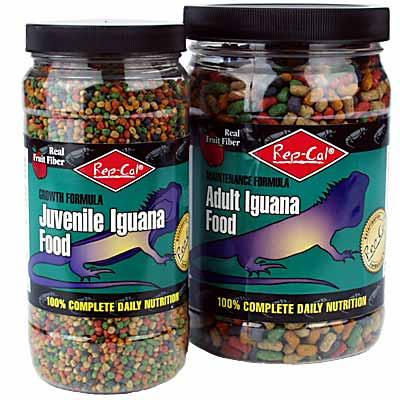People who think that iguanas only need to be given lettuce as food would be very wrong in their assumptions. Feeding an iguana has a lot of issues involved and a good iguana owner should learn as much as possible about these issues. Here is a guide to help you with some of the issues surrounding iguana food:
1) Vegetables – ther5e are guides which still say that iguanas should be fed insects and they may eat cat and dog food. The fact remains, however, that iguanas have bodies that are designed for effective consumption of plant protein. That means that your iguana is better off as a vegetarian. Iguana food should consist of vegetables that have high nutritional value such as collards or mustard greens. Occasionally feeding it lettuce is okay but you should not regularly do this since most types of salad lettuce contain very little nutritional value.
Why is an iguana better off eating vegetables? Well, an iguana will have a hard time processing animal proteins. This task requires a lot of work from the kidneys. This means that an iguana which is fed animal protein has a high chance of developing kidney problems. Animal proteins are also hard to absorb. Often, unabsorbed animal proteins are stored in the iguana’s body as uric acid this may lead to gout.
So, now you know why iguana food should consist of as much veggies as possible.
2) Water – iguanas tend to drink water only sparingly. If you do not have enough humidity in the enclosure, this would mean that your iguana will spend most of its days at least partially dehydrated. This can be bad for your iguana.

An owner should try to get an iguana to drink as much water as possible. Since iguanas are not naturally inclined to do this, you should take some steps to accomplish it. One way is to spray your iguana food with water. This way, the iguana will get the moisture it needs when it is feeding.
Another good idea is to try and train your iguana to drink as much water as possible. You can do this by placing a treat inside the iguana’s water dish. Do this regularly and soon, you will be able to train your iguana to drink from the bowl on its own.
3) Temperature – iguanas are cold blooded. This means that they depend on the heat of the environment for their bodily functions. No matter how good the iguana food you provide, the iguana will not be able to properly digest it without the proper temperature. After feeding, the temperature in the enclosure should be kept at least 85 degrees Fahrenheit. This will aid in the proper digestion of iguana food.
4) Calcium and phosphorus – When choosing iguana food, an owner should always keep in mind that iguanas need calcium and phosphorus in a 2:1 ratio. This means that you should try to choose foods that contain these nutrients.
5) Light – another issue about iguana food is the need for proper lighting. Iguanas need UVA and UVB rays to produce vitamin D3. This nutrient facilitates the proper absorption of calcium in the body. There are actually many types of artificial lighting that provide these rays, but the best source is still the sun. So if you want your pet to absorb the nutrients in the iguana food properly, make sure that you let it bask in direct sunlight as much as possible.
